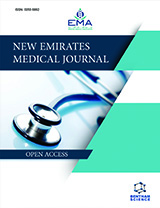Abstract
According to the World Health Organization (WHO), the prevalence of obesity across the globe has nearly tripled since 1975, with 39 million children under the age of 5 being overweight or obese in 2020. Obesity is the most common risk factor for developing type 2diabetes (T2D), which may lead to elevated serum triglycerides, hypertension, and insulin resistance. In the pathogenesis of T2D, there is a reduction in nitric oxide (NO) bioavailability. Restoration of NO levels has been associated with many favorable metabolic effects in T2D. Drugs that potentiate NO levels may have a role in improving T2D-associated adverse effects. Current medications approved for use in the management of T2D include biguanides, thiazolidinediones, sulfonylureas, meglitinides, dipeptidyl peptidase-4 (DPP-4) inhibitors, glucagon-like peptide-1 (GLP- 1) receptor agonists, alpha-glucosidase inhibitors, and sodium-glucose co-transporter 2 (SGLT2) inhibitors. These drugs mitigate the many adverse effects associated with T2D. This chapter discusses these classes of drugs, examines their mechanism of action, and presents evidence that these drugs directly or indirectly modulate NO levels.






















